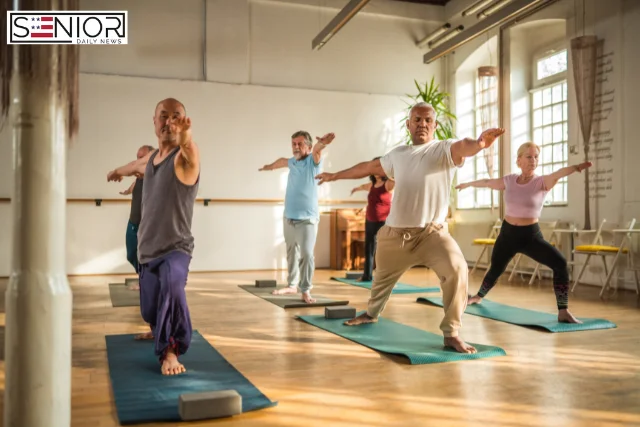The Importance of Flexibility and Stretching for Injury Prevention

As we grow older, maintaining our independence and mobility becomes more important than ever. Whether it’s gardening, walking the dog, or reaching that top shelf in the kitchen, staying active and agile makes life easier and more enjoyable. One key to this lasting independence? Flexibility and stretching for Injury Prevention.
For seniors, these two often-overlooked components of fitness are essential. Not only do they improve how your body feels and functions, but they also play a critical role in injury prevention. This article explores how simple daily stretching routines and flexibility exercises can help reduce the risk of falls, strains, and other common injuries in older adults.
What Is Flexibility, and Why Does It Matter?
Flexibility refers to your joints’ and muscles’ ability to move through a full range of motion. It affects everything from your ability to stand up, bend over, twist, or reach.
As we age, muscles naturally lose elasticity, and joints may stiffen. This can lead to:
- Reduced balance
- Decreased mobility
- Higher risk of falls and injuries
- Joint and muscle pain
The good news? Regular stretching can slow or even reverse these effects. Improving flexibility enhances movement, posture, and coordination—all essential for injury prevention in daily life.
Understanding Stretching
Stretching involves lengthening the muscles to improve flexibility, reduce tension, and prepare the body for activity or relaxation. There are several types of stretching:
1. Static Stretching
This is the most common form, where you hold a stretch for 15–60 seconds. Ideal for cooling down or improving flexibility over time.
2. Dynamic Stretching
These are controlled movements through a full range of motion, such as arm circles or leg swings. Great for warming up before physical activity.
3. Active Stretching
Using your own muscles to hold a position without external assistance. It builds strength and flexibility at the same time.
4. Passive Stretching
Someone or something else (like a band or towel) helps you hold the stretch. Often used in physical therapy or yoga.
For seniors, a combination of static and dynamic stretching is usually the safest and most effective.
Why Stretching Matters More as We Age
1. Prevents Falls and Injuries
Falls are a leading cause of injury among older adults in the U.S. Improving flexibility in the hips, legs, and back enhances balance and coordination, reducing fall risk.
2. Reduces Muscle Stiffness and Pain
Stretching helps keep muscles long and limber. This reduces joint stiffness and makes it easier to move without pain.
3. Improves Posture
Poor posture can lead to back pain and imbalance. Stretching opens up tight areas like the chest and hips, promoting better alignment.
4. Enhances Daily Function
Whether it’s bending over to tie your shoes or reaching overhead to get a bowl, flexibility makes everyday tasks easier and safer.
5. Boosts Circulation
Stretching encourages blood flow to muscles and joints, which aids in healing and keeps tissues healthy.
Common Injuries in Seniors That Stretching Helps Prevent
Stretching is not just about feeling good—it’s about staying safe. Here are some common injuries that improved flexibility helps avoid:
- Strains and sprains (from sudden movements)
- Falls (due to poor balance or stiff joints)
- Lower back pain
- Shoulder injuries
- Hip injuries
By incorporating a stretching routine, you reduce tightness and build resilience in your muscles and joints—your first defense against these injuries.
Easy Flexibility Exercises for Seniors
If you’re just starting out, remember: go slow, breathe deeply, and never force a stretch to the point of pain. Here are beginner-friendly exercises you can try at home:
● Neck Stretch
- Sit or stand tall
- Tilt your head gently to one side, bringing the ear toward the shoulder
- Hold for 15–30 seconds, then switch sides
● Shoulder Rolls
- Roll your shoulders forward 10 times, then backward 10 times
- Helps loosen up the upper back and shoulders
● Chest Opener
- Clasp hands behind your back
- Straighten your arms and lift your hands slightly
- Open your chest and hold for 20 seconds
● Seated Hamstring Stretch
- Sit on the edge of a chair
- Extend one leg forward with the heel on the floor
- Lean forward gently, keeping your back straight
- Hold for 20–30 seconds
● Standing Calf Stretch
- Stand facing a wall, place your hands on it
- Step one leg back, keeping the heel down
- Hold for 30 seconds and switch legs
● Ankle Circles
- While seated, lift one foot off the floor
- Slowly rotate your ankle in circles—10 in each direction
These stretches can be done daily or at least 3–5 times per week. Consistency is key.
When Is the Best Time to Stretch?
For seniors, the best times to stretch include:
- After waking up: Gentle morning stretches can reduce stiffness and prepare the body for the day.
- After exercise: Muscles are warm and more pliable, making this the ideal time for longer stretches.
- Before bed: Light stretching can help ease tension and promote better sleep.
Avoid intense stretching on cold muscles—do a light warm-up first (like walking or arm circles).
Stretching Safety Tips for Seniors
Before diving into a new routine, keep these safety tips in mind:
- Warm up first: Light movement like walking helps prepare muscles for stretching.
- Never bounce: Jerky movements can cause injury.
- Don’t hold your breath: Breathe deeply and steadily through each stretch.
- Listen to your body: Stretching should feel like mild tension, not pain.
- Use support: If needed, use a chair, wall, or strap for balance and stability.
If you have any existing medical conditions, talk to your doctor or a physical therapist before beginning a new exercise or stretching plan.
Other Ways to Improve Flexibility
Stretching is a key part of flexibility, but it works even better when combined with other healthy habits:
● Stay Hydrated
Water keeps your muscles supple and joints lubricated.
● Try Yoga or Tai Chi
These gentle practices emphasize balance, movement, and flexibility—perfect for seniors.
● Keep Moving
Daily movement—even just a walk around the block—helps maintain overall mobility.
● Use Foam Rollers
Foam rolling helps release tight muscles and fascia, improving flexibility and comfort.
FAQs: Flexibility, Stretching, and Injury Prevention
Q: How often should seniors stretch?
A: Aim for at least 3–5 times per week. Even 10–15 minutes a day can make a big difference.
Q: Is it ever too late to improve flexibility?
A: No! Regardless of age, consistent stretching can improve flexibility, range of motion, and overall mobility.
Q: What’s the difference between flexibility and stretching?
A: Flexibility is the ability to move joints through their full range of motion. Stretching is a method used to improve flexibility.
Q: Can stretching help with arthritis?
A: Yes. Gentle stretching can reduce joint stiffness, improve circulation, and relieve pain. Always consult with your doctor first.
Q: What should I do if a stretch hurts?
A: Stop immediately. Stretching should never be painful. Modify the stretch or consult a professional for guidance.
Image Source Canva






